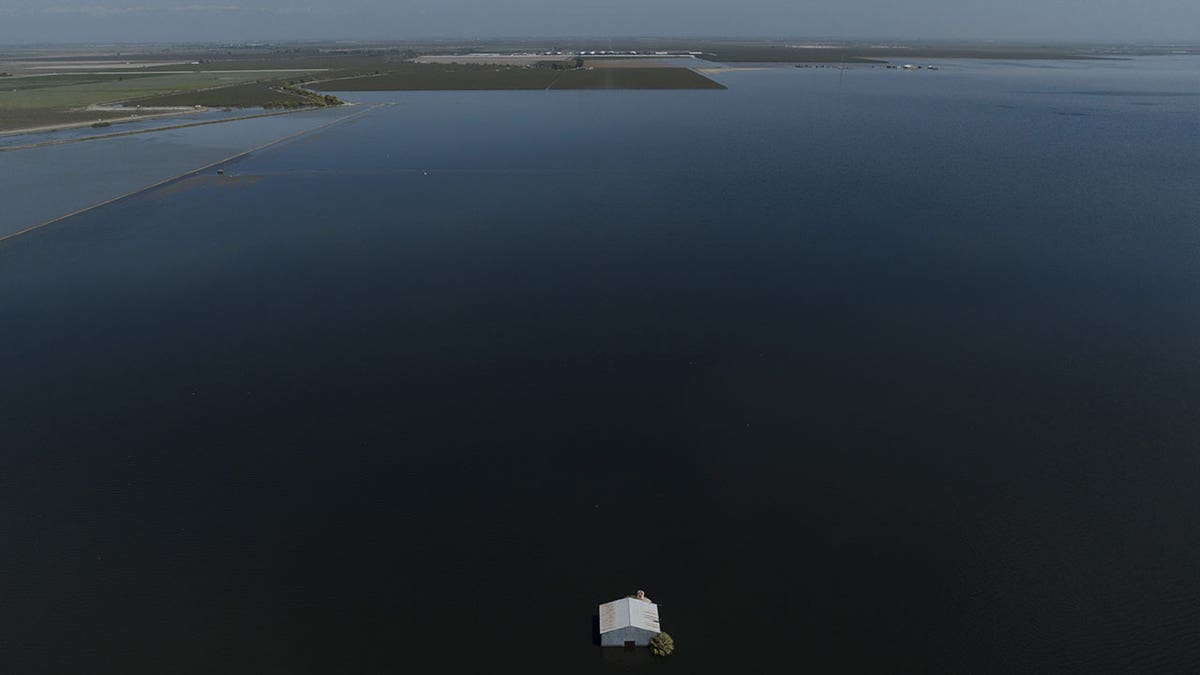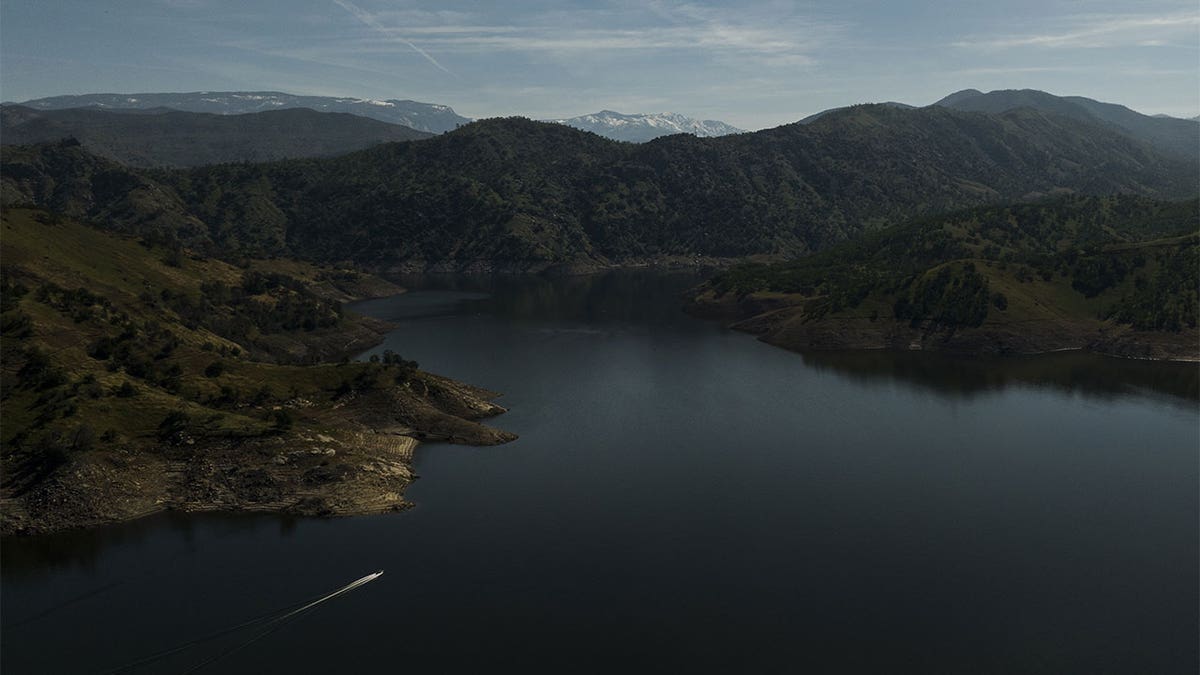Major California floodwaters threaten local landmark, tourist destination
The Shadowbrook restaurant overlooking Soquel Creek in Capitola, CA is threatened by rising flood tides. Credit: Shadowbrook Restaurant
Residents in Lemoore, California, a rural Central California community known as the Island District, fear spring snowmelt in the Sierra Nevada Mountains could bring gushing waters to the region, overwhelming the rivers, channel and basin that surrounds the community.
The area is situated about halfway between Los Angeles and San Francisco and is filled with pistachio orchards, horse farms, a school and a community of roughly 25,000 residents.

Farmland in the Tulare Lake Basin is submerged in water in Corcoran, Calif., Thursday, April 20, 2023, after more than a dozen atmospheric rivers dumped record-setting rain and snowfall. Residents in rural communities in the heart of the state are facing the prospect of being marooned by rising rivers or flooded out. (AP Photo/Jae C. Hong) (ASSOCIATED PRESS)
The drought-stricken region recently experienced over a dozen atmospheric rivers that brought excessive rainfall and fierce winds, filling reservoirs. But now there is concern that the melting snow will bring more water to an upstream reservoir that could fill it three times over its capacity, the Associated Press reported.
CALIFORNIA SEES 12TH ATMOSPHERIC RIVER EVENT WITH MORE SNOW ON THE WAY
"The water is coming this way," Ron Caetano told the news wire. Caetano started a community Facebook group for the Island District that keeps a pulse on the impending weather and deteriorating conditions. "I am preparing for the worst and praying for the best and that’s all we can do."
According to the AP’s report, water managers are the north fork of the Kings River does not have the capacity to contain snowmelt from the Sierra Nevadas and give it a carved route to the Pacific Ocean.

Heavy equipment reinforces levees in preparation of possible flooding as farmland in the Tulare Lake Basin is submerged in water in Corcoran, Calif., Thursday, April 20, 2023, after more than a dozen atmospheric rivers dumped record-setting rain and snowfall. Officials want to raise the levee another 3.5 feet (1 meter), city officials said. (AP Photo/Jae C. Hong) (ASSOCIATED PRESS)
Additionally, water from the river is moving into the south fork, which is the channel that winds near Lemoore, toward a basin.
NEW EVACUATIONS ORDERED NEAR CALIFORNIA TOWNS WHERE LEVEE BROKE
Over 100 years ago, the basin was the largest freshwater lake west of the Mississippi, called Tulare Lake. Historically, the lake would grow in the winter from snowmelt, though settlers and farmers diverted the waters to their crops and created dams, leading to the lake running dry.
The only time the lake appears these days is when the region experiences torrential rains like it has over the past few months. The residual rain waters now cover swaths of farmland, paved roads and show signs of what is beneath through utility poles and trees that poke up out of the water.
The general manager of the Kings River Conservation District told the AP that a reservoir located about 50 miles upstream called the Pine Flat Reservoir, has a capacity of 1 million feet of water. But once the snow melts this spring, the reservoir is expected to receive over 3 million acre feet of water.

A boat crosses Pine Flat Lake as snow-capped mountains are visible in the distance in the Sierra National Forest, Calif., Friday, April 21, 2023. The reservoir can hold up to 1 million acre feet of water and is expected to receive more than 3 million acre feet this spring from the melting snow, according to David Merritt, general manager for the Kings River Conservation District. (AP Photo/Jae C. Hong) (ASSOCIATED PRESS)
The anticipation of added waters has forced officials to make space for more water by way of increasing the flow of water out of the reservoir. It has also put downstream communities on alert.
SOCAL MOUNTAIN COMMUNITIES STILL CLEARING SNOW FROM RARE BLIZZARD, OTHERS TRAPPED WEEKS LATER
In the Island District, residents brought back a system last used in 1983, of neighbors helping neighbors during a crisis. This time, cellphone technology can help spread the word a little more quickly.
Over 200 residents signed up to help their neighbors if waters take over the community.
Scientists with San Diego’s Scripps Institution of Oceanography at the University of California expect climate change will lead to drier drought years and wetter wet years, though how communities will fare during these times greatly depends on how fast the weather heats up.
A gradual warming with cooler temperatures remaining low longer would mean the snow will melt slower and not overwhelm the rivers.
A hot spell could melt snow much faster and send enormous amounts of water through the rivers and potentially cause them to overflow.
Unlike areas like Corcoran, which are protected by a levee, the Island District is without such protections. Instead, they are using cell phones and social media to share photos of wooden sticks near waterways to keep everyone informed.
The Associated Press contributed to this report.


